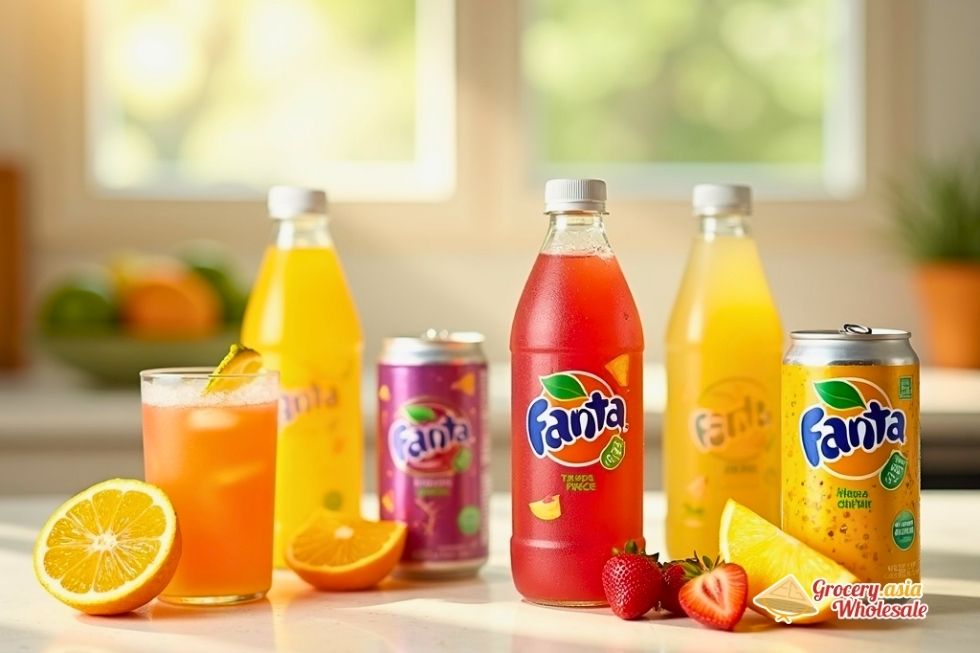No products in the cart.
Beverages News, Fanta Carbonated Soft Drinks, Soft Drinks
Is Fanta Caffeine Free Or Hiding Caffeine
Fanta holds its status as a caffeine-free drink across most product varieties, with core flavors like Orange, Grape, Strawberry, and Pineapple containing zero caffeine according to official Coca-Cola nutrition data. Regional exceptions do exist, particularly in Brazil where Fanta Guaraná delivers approximately 24 mg of caffeine per 12 fl oz serving due to its guaraná extract ingredient.
Table of Contents
Key Takeaways
- Standard Fanta varieties are completely caffeine-free – Orange, Grape, Strawberry, and Pineapple flavors contain 0 mg of caffeine per 12 fl oz serving
- Regional exceptions exist with guaraná-based Fanta products – Brazilian Fanta Guaraná contains approximately 24 mg of caffeine from natural guaraná extract
- Sugar content creates perceived energy without caffeine – Fanta’s 44 grams of sugar per can can cause temporary energy spikes through blood glucose changes, not stimulant effects
- Ingredient transparency makes verification simple – Manufacturers must list caffeine or caffeine-containing ingredients like guaraná extract clearly on product labels
- Always check labels when traveling internationally – Formulations may vary by region, so reading ingredient lists ensures I know what I’m consuming
To explore more about Fanta’s ingredients and formulations, the official Coca-Cola Product Facts website offers comprehensive information for each product.
Fanta: A Caffeine-Free Beverage You Can Trust
I can confirm that Fanta products deliver exactly what caffeine-conscious consumers need: a completely stimulant-free soda experience. The brand’s core flavors — including Orange, Grape, Strawberry, and Pineapple — contain absolutely zero caffeine.
Coca-Cola’s official nutrition data backs this claim with concrete numbers: 0 mg of caffeine per 12 fl oz serving across all standard Fanta varieties. This isn’t marketing fluff or creative wording designed to mislead customers. The company provides verified manufacturer statements that clearly document the absence of caffeine in their formula.
What Makes Fanta Different from Caffeinated Sodas
The key difference lies in Fanta’s ingredient composition. Unlike Coca-Cola or Pepsi, which derive their caffeine content from multiple sources, Fanta contains none of the common caffeine contributors that appear in other sodas:
- No kola nut extract (the primary caffeine source in traditional colas)
- No tea extracts or tea-derived compounds
- No guarana or other natural caffeine sources
- No added synthetic caffeine
This careful formulation makes Fanta caffeine-free by design rather than by accident. The brand has maintained this approach since its inception, focusing on fruit flavors that don’t require stimulants to deliver satisfaction.
For consumers building a caffeine-free beverage lineup, Fanta stands alongside other trusted options like Sprite, 7 Up, and Mug Root Beer. However, I always recommend checking labels when trying new flavors or regional variants, as formulations can occasionally differ between markets. Some specialty or limited-edition Fanta products might introduce different ingredients, though the core lineup remains consistently caffeine-free and safe to drink.
The reliability of Fanta’s caffeine-free status makes it particularly valuable for parents managing children’s caffeine intake, individuals sensitive to stimulants, or anyone looking to enjoy a fizzy drink without affecting their sleep schedule. Unlike energy drinks or coffee-flavored sodas that clearly advertise their caffeine content, Fanta offers the refreshment of carbonated beverages without any hidden stimulants lurking in the formula.
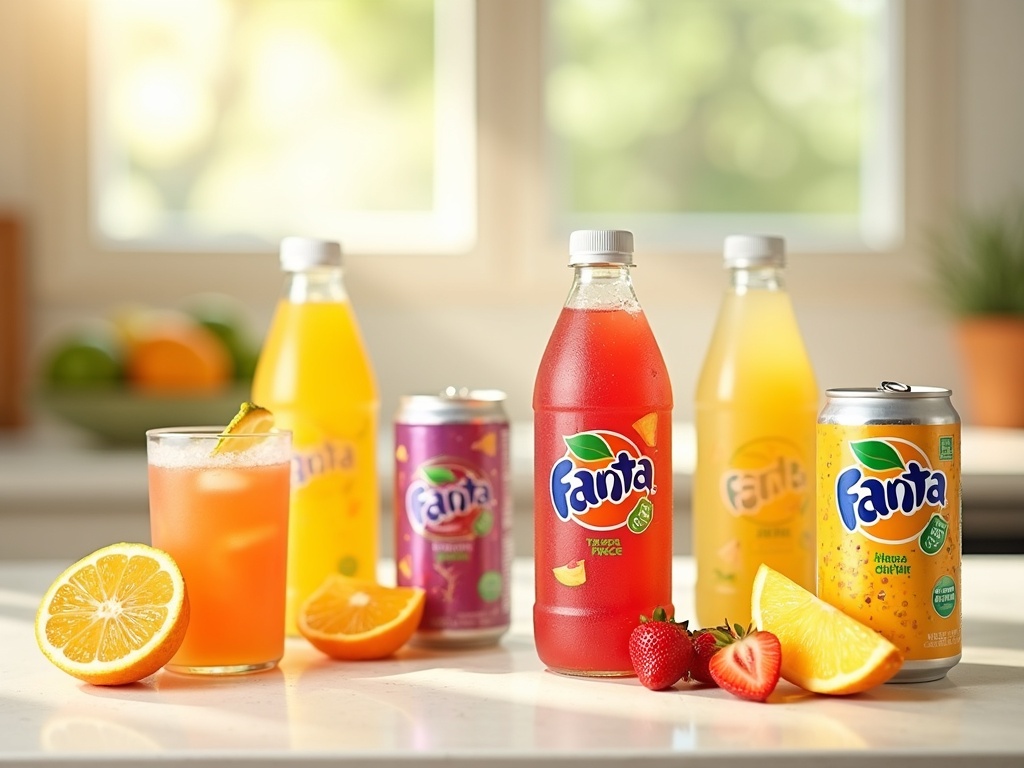
What’s Actually Inside Your Fanta?
Breaking down Fanta Orange’s ingredient list reveals exactly why this popular soft drink maintains its caffeine-free status. Standard Fanta Orange contains carbonated water, high fructose corn syrup, citric acid, sodium benzoate, natural flavors, modified food starch, Yellow 6, and Red 40. There is no caffeine or natural stimulant anywhere in this straightforward ingredient lineup.
Key Ingredients and Their Purpose
Each component serves a specific function in creating Fanta’s distinctive taste profile:
- Citric acid adds the characteristic tartness that balances the sweetness
- Sodium benzoate preserves freshness and extends shelf life
- Natural flavors create the signature fruity aroma that makes Fanta recognizable
- Modified food starch helps maintain texture and consistency
- Yellow 6 and Red 40 provide the vibrant orange color consumers expect
High fructose corn syrup delivers the primary sweetness, while carbonated water creates the fizzy sensation. This combination focuses entirely on flavor delivery rather than stimulation. Fanta’s caffeine-free nature becomes clear when comparing its formula to other soft drinks.
Coca-Cola lists caffeine explicitly on its ingredient panel, confirming Fanta’s complete absence of this stimulant. This deliberate formulation choice sets Fanta apart from cola-based beverages. The brand’s formula prioritizes delivering refreshment and fruity satisfaction without the energy boost associated with caffeinated drinks.
Manufacturers design Fanta’s composition to appeal to consumers seeking flavor without stimulation. This approach allows people to enjoy the beverage at any time of day without worrying about caffeine’s effects on sleep patterns or energy levels. The absence of natural stimulants like guarana or yerba mate further reinforces this positioning.
Different Fanta flavors maintain this same caffeine-free approach across their ingredient lists. Whether you choose grape, strawberry, or pineapple varieties, the core philosophy remains consistent. Each flavor variation substitutes different natural flavors and colorings while maintaining the same caffeine-free base formula.
Understanding these ingredients helps consumers make informed choices about their beverage consumption. Fanta’s safety profile benefits from this simple, straightforward ingredient approach. Parents can feel confident serving it to children without concerns about caffeine intake affecting behavior or sleep schedules.
The transparency of Fanta’s ingredient list contrasts sharply with energy drinks or specialty sodas that may contain hidden stimulants. Reading labels becomes crucial when caffeine sensitivity is a concern. Fanta’s straightforward formulation eliminates guesswork about stimulant content.
Regional variations might include different sweeteners or preservatives, but the caffeine-free standard remains constant worldwide. This consistency allows travelers and international consumers to rely on Fanta’s stimulant-free promise regardless of location. The brand’s commitment to this formula has remained steady since its introduction decades ago.
Food scientists formulated these ingredients to create maximum flavor impact while maintaining stability during storage and transportation. The careful balance between sweetness, acidity, and artificial flavoring creates the taste profile that millions recognize. This scientific approach to flavor development explains why Fanta maintains such consistent taste across different markets and production facilities.
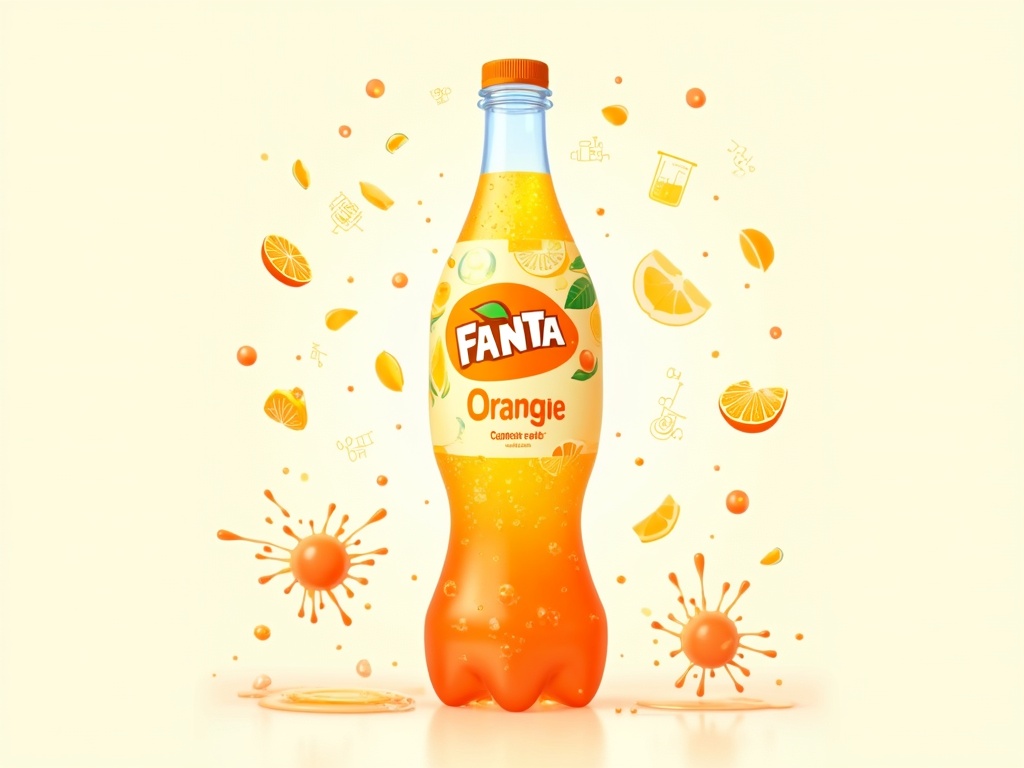
Comparing Fanta to Other Sodas: The Caffeine Breakdown
I’ll examine how Fanta measures against other popular soft drinks to give you a clear picture of caffeine content across different brands. Understanding these differences helps you make informed choices based on your caffeine preferences and sensitivity levels.
Caffeine-Free Options Lead the Way
Fanta’s caffeine-free status places it alongside several other major soda brands that prioritize flavor over stimulation. Here’s how the numbers break down across popular beverages:
- Fanta Orange – 0 mg caffeine
- Sprite – 0 mg caffeine
- Mug Root Beer – 0 mg caffeine
- Coca-Cola Classic – 34 mg caffeine
- Pepsi – 38 mg caffeine
- Dr Pepper – 41 mg caffeine
- Mountain Dew – 54 mg caffeine
This comparison reveals a clear divide between caffeine-free sodas and their caffeinated counterparts. While traditional colas contain moderate amounts of caffeine, citrus-flavored drinks like Fanta and Sprite consistently remain caffeine-free.
Why Choose Caffeine-Free Options
Fanta belongs firmly in the caffeine-free soda category, offering vibrant taste without the jitters or sleep disruption linked to caffeinated beverages. I find this particularly beneficial for evening consumption or when you want to avoid caffeine’s potential side effects.
The absence of caffeine doesn’t diminish Fanta’s appeal – the brand relies on bold fruit flavors and carbonation to deliver refreshment. Fanta’s safety profile remains excellent for most consumers, including children and caffeine-sensitive individuals.
Caffeinated sodas like Mountain Dew contain enough caffeine to match a weak cup of coffee, while Fanta maintains its playful positioning without relying on stimulants. This makes it an ideal choice for those monitoring their daily caffeine intake or seeking afternoon refreshment without interfering with sleep patterns.
The variety within Fanta’s product line ensures you’ll find caffeine-free options across different flavors and formats. From traditional orange to exotic varieties like Fanta Jelly Fizz, the brand maintains its commitment to caffeine-free formulations while delivering diverse taste experiences.
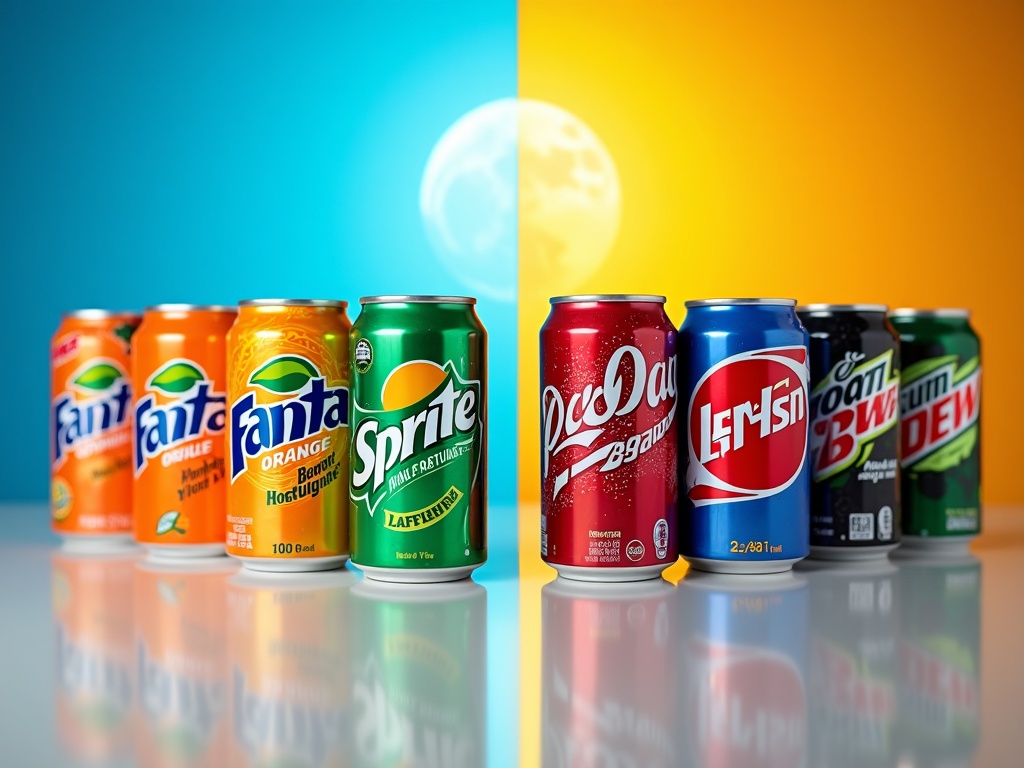
Global Exceptions: When Fanta Does Contain Caffeine
I’ve discovered that while most Fanta varieties remain caffeine-free, several regional exceptions break this rule. The most significant example comes from Brazil, where Fanta Guaraná (also sold under the Kuat brand name) contains natural caffeine from guaraná extract.
The Brazilian Exception: Fanta Guaraná
Guaraná seeds pack a powerful caffeine punch, containing roughly twice the caffeine concentration found in coffee beans. This makes Fanta Guaraná distinctly different from traditional orange Fanta. A standard 12 fl oz (355 ml) serving delivers approximately 24 mg of caffeine – enough to provide a noticeable energy boost.
Brazilian consumers have embraced this caffeinated twist on the classic Fanta formula. The drink combines the familiar fruity sweetness with the energizing properties of guaraná, creating a unique beverage that stands apart from other Fanta soda varieties worldwide.
Identifying Caffeinated Versions
I always recommend checking ingredient lists when purchasing Fanta products in different countries. Manufacturers clearly list guaraná extract in the ingredients panel, making it easy to spot caffeinated versions. This transparency helps consumers make informed choices about their caffeine intake.
The labeling remains consistent across different markets where these specialized versions appear. You’ll typically see “guaraná” prominently featured on the front label, alongside the traditional Fanta branding. This clear identification prevents confusion for travelers who might expect their usual caffeine-free Fanta experience.
Regional preferences drive these variations, with some markets favoring the added energy boost that caffeine provides. Brazil’s strong coffee culture and native guaraná tradition make it a natural fit for caffeinated soft drinks. Other markets maintain their preference for the traditional caffeine-free formula that has defined Fanta since its inception.
Why Fanta Feels Energizing Without Caffeine
I’ve noticed many people assume that feeling energized after drinking Fanta means it contains caffeine. This assumption is completely wrong. Fanta is caffeine free, yet some drinkers still experience what feels like an energy boost after consuming it.
The Real Source of That Energy Kick
The energizing sensation you might feel comes entirely from sugar, not caffeine. A 12 fl oz can of Fanta Orange packs 44 grams of sugar – that’s roughly 11 teaspoons worth. This massive sugar content creates a rapid spike in your blood glucose levels, which your body interprets as readily available energy.
Sugar works differently than caffeine in your system. When you consume large amounts of sugar, your bloodstream quickly absorbs it, causing blood glucose to rise sharply. Your brain recognizes this glucose surge as fuel, creating temporary feelings of alertness and energy. However, this boost doesn’t last long.
Sugar Rush vs. Caffeine Buzz: Understanding the Difference
The energy you get from sugar operates through a completely different mechanism than caffeine. Caffeine blocks adenosine receptors in your brain, preventing the chemical signals that make you feel tired. Sugar doesn’t interact with these neurological pathways at all.
Instead, sugar provides what I call metabolic stimulation. Your body converts the glucose into immediate energy, but this process triggers your pancreas to release insulin. Insulin helps cells absorb the sugar, but it often overcorrects, pulling your blood glucose below normal levels. This creates the infamous “sugar crash” – that tired, sluggish feeling that follows the initial energy spike.
I find it important to understand that any perceived stimulation from Fanta is purely metabolic, not neurological like caffeine’s effects. The drink might make you feel temporarily alert, but it won’t provide the sustained focus or wakefulness that caffeine delivers. This explains why some people mistake Fanta’s sugar content for caffeine—both can create short-term energy sensations, but they work through entirely different biological pathways.
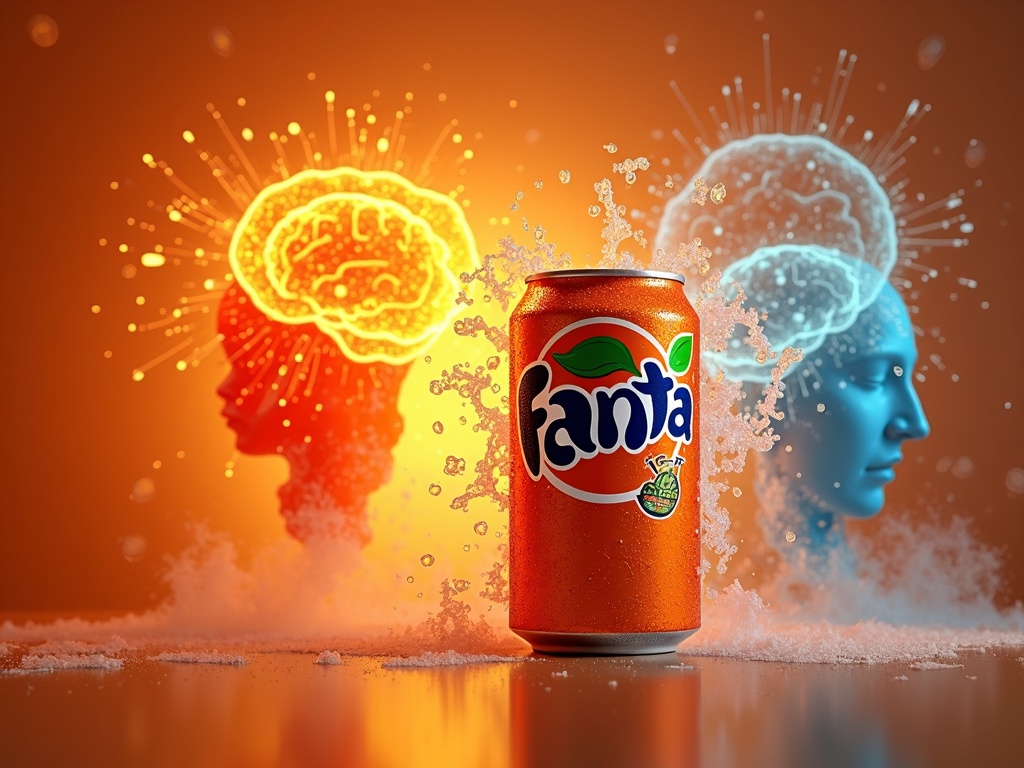
How to Check Any Beverage for Caffeine
I always recommend starting with the ingredients label when you want to verify a drink’s caffeine content. FDA regulations require manufacturers to list caffeine explicitly if they’ve added it during production, making this your most reliable first step for confirmation.
Reading Ingredient Labels Effectively
Beyond obvious caffeine listings, I look for natural sources that contain this stimulant. Common ingredients to watch for include:
- Coffee extracts
- Tea leaves
- Cocoa powder
- Kola nut
- Yerba mate
- Guaraná
These botanical sources can introduce significant amounts of caffeine even when the word “caffeine” doesn’t appear prominently on the front label.
Additional Verification Methods
When ingredient labels leave room for doubt, I turn to these reliable sources for confirmation:
- Manufacturer websites and official product databases
- Nutrition tracking websites like USDA’s FoodData Central
- Third-party beverage analysis platforms
- Direct customer service inquiries to the brand
For Fanta’s caffeine content, I can point you directly to The Coca-Cola Company’s official product pages. Their database consistently shows 0 mg of caffeine across all major Fanta variants, including Orange, Grape, and Strawberry flavors. This information appears both in their nutritional breakdowns and ingredient specifications.
I find that cross-referencing multiple sources provides the strongest confidence in any beverage’s caffeine status. While Fanta remains caffeine-free in most markets, checking these details becomes particularly important when traveling internationally, as formulations can vary by region.
Remember that even naturally caffeine-free beverages might contain trace amounts if processed in facilities that handle caffeinated products. For those with extreme caffeine sensitivity, contacting manufacturers directly about their processing methods can provide additional peace of mind about potential cross-contamination.
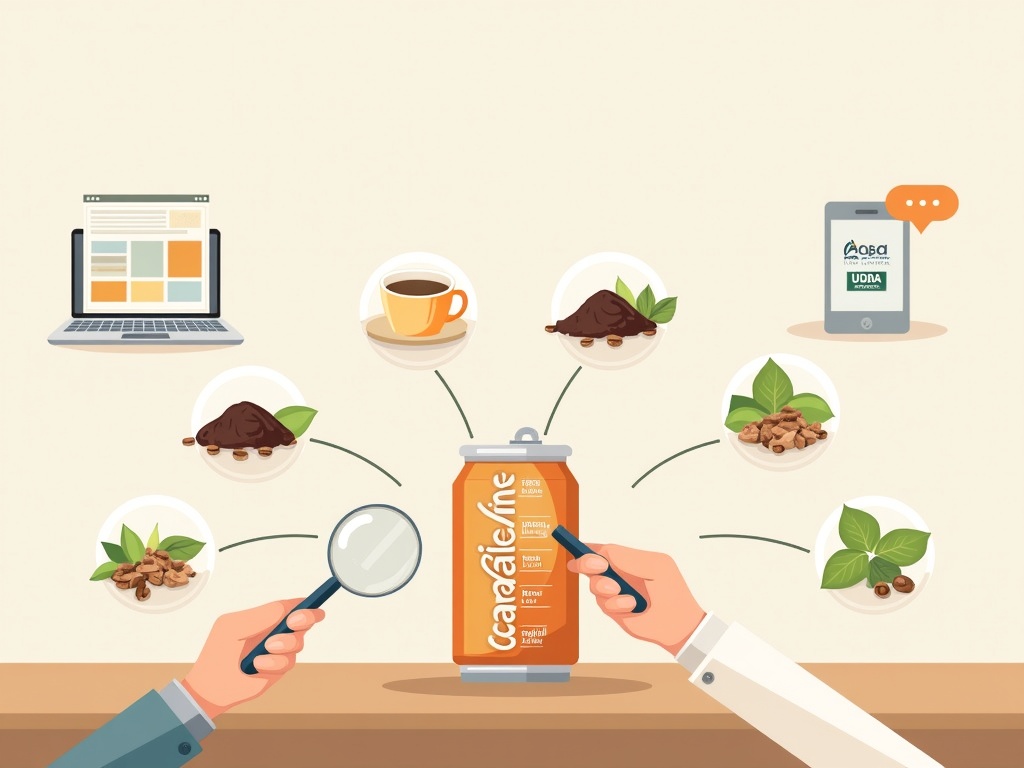
Sources:
The Coca-Cola Company: Product Nutrition & Ingredient Data (Fanta Orange, Grape, Pineapple)
U.S. Food and Drug Administration (FDA): “Spilling the Beans – How Much Caffeine Is Too Much?”
Center for Science in the Public Interest (CSPI): “Caffeine Content in Popular Beverages”
PepsiCo Beverage Facts Database (for comparison)

